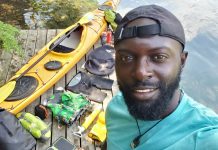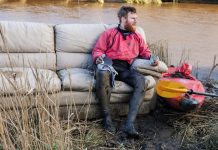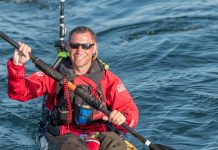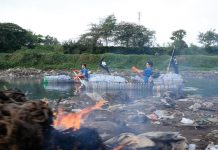Seattle-based Gary Luhm is one of the most prolific paddling photographers working on the water today. Whether capturing intimate portraits of seabirds and marine life, or shooting high-action kayaking and stirring seascapes—like the Early Summer issue’s cover—Luhm has combined his keen eye and his comfort in a cockpit since the early ‘90s. After learning to roll his kayak, he discovered “a whole new world: rough-water paddling, coastal exploration, solo trips.” There was no turning back—Luhm left an engineering career in 1998 to pursue his twin passions full-time.
WHO has been your most difficult subject?
We were aboard the kayak mothership Home Shore, in 2003, anchored in protected waters off Chichagof Island, Alaska. It was stormy weather—17- foot swell on the outside. My paddling buddy Tim Walsh and I paddled out through a slot between islets and into a maelstrom of ocean swell, rock reef and reflected waves. I pulled out an all-manual Nikonos underwater camera and shot a dozen, one-handed frames. A couple of images from that shoot became best sellers. Not long after, Home Shore lost their liability insurance when the insurer saw the published photos!
WHAT advice to you give photographers?
Make a shot list. If you have trouble thinking up a list, study images others have created from the area you’re going to paddle, and imagine how you could do better. Don’t shoot from eye level—lie on the ground, climb a tree. If seated in the kayak, shoot with the camera at arm’s length, either down near the water or high overhead—anything to get your subject’s eyes off the horizon line. It’s difficult to get out front for shots of paddlers moving toward you, but that’s the shot that sells. We’re wired to want to see faces.

PHOTO: GARY LUHM
WHEN did you run out of P.B.?
I stole the idea for this self-portrait from Seattle photographer John Greengo. His own peanut butter jar selfie accompanies a great story about how he ran out of food on a canoe trip and he wanted to represent that photographically. The empty peanut butter jar did the trick. My selfie, similarly composed with a wide-angle lens peering from the bottom of a Costco-size jar, has a starving artist angle. For execution, I simply cut the bottom out of a spent jar and tried to show some desperation in my face.
WHERE do you look for creativity?
I don’t have a problem staying creative—I’ve got an internal shot list that never shrinks. My ratio of paddling for fun versus work is probably 10:1 on the fun side. On weekends, paddling with friends or Washington Kayak Club trips, I don’t often pick up the camera. A typical year, I shoot 70 days in the field, or roughly one day in five. Non-shooting workdays, I’m editing photos, marketing, planning the next shoot, or traveling. My advice: shoot locally. You benefit from more days shooting, save on travel cost (that’s big), and it’s better for the planet (even bigger).
WHY not mountain biking or skiing?
I had some knee trouble and was looking for a sport I could really embrace. Sea kayaking is perfect: a year-round activity, as vigorous as you want it to be, no limit to skill-building, great camaraderie, quick getaways, fascinating scenery and wildlife, and great food, too. Exploring by kayak is endless. Lately, I’m almost glad it seems to be losing popularity to SUP and other lower-cost-of-entry activities. We can still have those remote, no-cell-service beaches to ourselves.
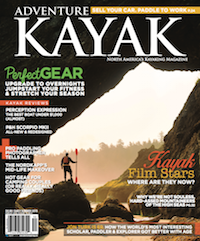
Subscribe to Paddling Magazine and get 25 years of digital magazine archives including our legacy titles: Rapid, Adventure Kayak and Canoeroots.



